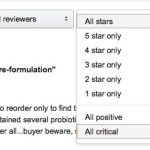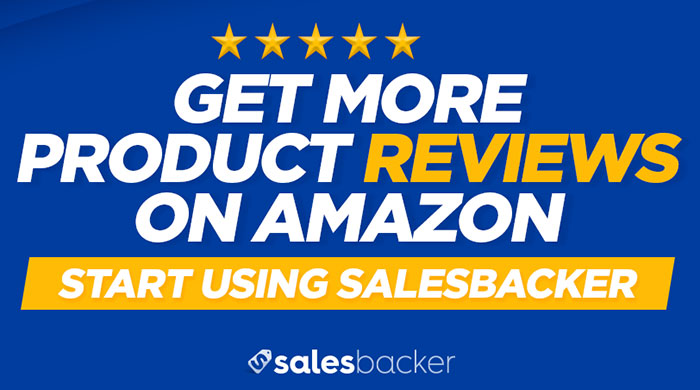So if you’re sitting in a coffee shop drowning your Amazon sorrows in a quad-shot of espresso, this post is for you.
It happens to the best of us, and it’s perfectly natural. Anytime we place a large amount of effort into a project, we become attached. We want to reap what we sow. And when you work so hard, when you put in lots of time, when you give it your best shot, it’s incredibly discouraging to see little results. Your Amazon business is no different.
And I know the thoughts that begin to plague you when you are experiencing “Amazon depression”. “Should I think about giving up on the product?” “I wonder if someone would buy my business from me?” “Maybe there’s another way to start my own business that would be easier or quicker?”
If this is you, take heart that you are not alone. Thousands of sellers have gone before you and felt the same way. Different niche, different product, different numbers, but they experienced the same feeling.
The hardest part of Amazon depression is not knowing what to do about it. Too many sellers panic and begin flailing for survival, trying out any and every piece of advice they receive on boosting traffic and sales in the next 48 hours. And usually this only leads to further disappointment.
I’m here to talk you down from the ledge. I want to center you back on the basics of Amazon selling. These six basics are the true building blocks of Amazon success. They may not be flashy or trendy, but the results can’t be denied.
So before you slip into a coffee coma, remind yourself of these six essential tasks that guarantee results for every Amazon seller. Think of these as a kind of checklist you can use whenever you feel yourself discouraged with your progress.
SIX P’S TO GET YOU BACK ON TRACK
1. PERSPECTIVE
If you sat down with a group of experienced Amazon sellers and asked them for their best advice, you would no doubt hear this recommendation from someone: Don’t look for overnight success.
And it’s great advice.
Of course, there are a very small minority of people who experience “overnight success”, and you’ll likely hear them highlighted on podcasts, webinars, and at large events. But as most infomercials will tell you, these individual results do not guarantee your own results. Trying to hit overnight success in online sales is like trying to win the lottery. It could happen, but the probability is astronomically low.
Instead, the smart Amazon seller aims at long-term success. He or she is not a fly-by-night salesman that sets up shop for a day then moves on to the next target. You’re trying to build a company, a brand, a major platform for future success. It might be difficult to hear, but the truth is that you’re not aiming at success in three months. You’re aiming at success in three years.
Lots of people think of their Amazon business like building a treehouse. Sure, it takes work, but in a week, you’re in business! And suddenly, building an Amazon business is reduced to a three step process: 1) Pick a product. 2) Order the product. 3) Sell the product. And that simple process will be making you millions in three months.
But instead of thinking of your Amazon business like building a treehouse, think of it more like planting a tree. If someone told you that you could have your very own oak tree in your backyard, you wouldn’t expect that in a week you’d be climbing the branches. Sure, you could describe it in simple steps, but each of those steps take time and patience. You’re not looking for a shade tree in five days. You’re looking for a shade tree in five years.
Keeping that future focus allows you to focus on what’s really essential to your business. It will help you weed out the “urgent” tasks that distract you today and will keep watering the tasks that set you up for future success. It will enable you to stop chasing “fads” in online marketing, the “next big thing” that promises a 1,000% increase in traffic overnight, and you’ll be able to resist the temptation to tackle 50 projects at a time.
If you’re currently discouraged with your sales on Amazon, you may just need to readjust your expectations. Are you comparing yourself with anomalies in the market? Are you comparing your sales with someone in a different niche? Did you jump into Amazon with the anticipation of immediate success? Now step back and center yourself on the reality of building an online brand. Be patient.
The good news is that success is guaranteed... if you’re willing to work and wait.
2. PRODUCT
If you’re facing low or no sales, it’s time to really take a good look at the product you’ve chosen to sell. In the end, your product is the key component to good sales. You can have great ads, great discounts, great labeling, but if the product is poor, you won’t go far.
So just for a moment, ask yourself these questions concerning your product:
- Is my product offering true value and quality to my customers? You need to be honest in answering this question, then face the facts. If you were trying to make a quick buck and ordered from the clearance rack of Alibaba, you need to admit it. Would you be embarrassed to sell your product to a close family member or friend? If so, own up to it and rethink your strategy. Confidence in your own product is essential to battling discouragement on low sales days.
- Is my product within a very competitive category or niche? If you answer yes, then that doesn’t mean you should get out. Lots of sellers have jumped into competitive categories and found a foothold on which to build a business. However, competitive categories are like hard soil. They produce slower growth ratios than other products, so you’ll have to be doubly patient. Slow sales days are part of the program, so embrace it and keep moving. Or you may need to start planning on how to branch into another category or niche with your next product.
- Is my product exactly the same as my competitors? If your labeling is the only difference between you and your competitor’s products, you need to start brainstorming for solutions. This doesn’t necessarily mean scrapping the product or redesigning the label (though it might). You could simply highlight a feature of the product that your competitor isn’t. Is there an ingredient in your product that you could emphasize? Is there a benefit to your product gives that no one else is featuring? Can you offer a better guarantee than your competitor? Think hard about ways to differentiate your product from your competitor. (If you want more ideas on differentiation, check out our other article, “How to Differentiate Your Product from Your Competitors”.)
3. PRICE
If you’ve decided your product is solid, you should celebrate. This means you have one of the most essential seeds for growing your Amazon business, and some sellers don’t have that.
But even though you have a great product, you may need to evaluate your pricing. Pricing is another key to staying competitive on Amazon. Outside of reviews (which we’ll discuss in a moment), pricing is one of the first places Amazon customers look for to make their purchasing decisions. So ask yourself these questions:
- Is my pricing too high? Sometimes sellers are so focused on increasing their profit margin that they overlook the pricing of their competitors. If your product is within a fairly competitive category, you’ll need to be competitive in your pricing at first. Though you certainly need to make a profit, you also certainly need customers. Lowering your profit margin by lowering your price may be a good investment if it gains you some loyal customers. If you’re trying to battle your way to the top, try lowering your price below your competitor if possible to attract some of their customers. Don’t be too hasty to turn a high profit when you’re simply trying to gain traction.
- Is my pricing too low? It sounds like a crazy question, but a low price point can actually drive customers away. There is a fine line between being affordable and being cheap. You can imagine this in your own purchases. Let’s say you’re searching for cold medication for your child. You find three brands on the shelf. One is $4.99, one is $3.98, and the third brand is 99¢. No matter how frugal you are, you’re going to be skeptical on the effectiveness of the third brand. So try to determine whether your price point may be calling your quality into question.
If you’re not sure about your price point, don’t be afraid to do some tests. Raise or lower the price on your listing, then leave it there for a few days. If you don’t like the results, adjust the price again and see what happens. Playing with your pricing may give you some valuable data and help you find that pricing sweet spot every seller is looking for.
4. PROOF
Sure, you know that your products is a quality product, but how do your potential customers know? On Amazon, the primary proof of your product’s quality is found within your reviews. They are a must have element in your listing. If you don’t yet have a significant number of reviews and you haven’t been trying to get them, start now. Strategize how you can get the honest opinions of people who have tried your product. This can be done through giveaways, promotional codes, and even reaching out to recent customers.
At the same time, evaluate the rating of the reviews you already have. Ultimately, the quality of your product isn’t being decided by you. It’s decided by the customer. So listen to what your reviews are saying. If you’re seeing quite a few poor reviews from verified purchases, you might want to go back to #1 and analyze your product.
If you’re having a hard time getting reviews, check out our own Salesbacker software. We specialize in creating custom campaign templates to help you get reviews and feedback on your products, and we help you find top-rated reviewers already on Amazon. And right now you can try it out for free for 30 days.
5. PROMOTION
The fact that Amazon has millions of shoppers on their site every day makes it a great place to start a physical product business. But if you think that throwing up a product listing will immediately attract customers, you’re wrong. It’s like writing a single blog post online and expecting it to go immediately viral. It doesn’t work that way. Not only do you have millions of blog readers, but you also have millions of bloggers.
So if you’re not investing into advertising campaigns for your product, you need to start learning how. It will take some time to figure out the ins and outs of advertising through Facebook, Pinterest, or other advertising platforms, but that investment of your time will maximize future growth for your business. If you’re not sure where to start in your advertising, take my recommendation: Amazon Sponsored Ads. If you want a guide to setting up an Amazon ad campaign, head over to our other post on “How to Set Up an Amazon PPC Campaign”.
If you’re already using Amazon’s Sponsored Ads, then try another platform that can drive traffic to your site. Don’t try to learn three different platforms at once. Start with one, learn from the experience, become comfortable with the process, then move on to the next. You’ll quickly learn that many of the platforms have common similarities.
6. PERFECT
Okay, I’m pushing the “p” alliteration here, but I’m referring to the optimization of your listing. You need to perfect your Amazon product listing with carefully researched keywords and good copy. Your listing is the front door of your Amazon business, and when people step inside, they shouldn’t leave without knowing exactly what your product offers and how it will benefit them.
First, have you packed your listing full of researched keywords for your product? Remember, you don’t need to duplicate keywords on your listing, so try to use as many as possible in your title, bullets, and product description. By making your listing “keyword heavy”, you’ll have a better chance at getting your product to show up on search listings. (Note: Be sure that your product listing complies with Amazon’s guidelines; otherwise, you could be penalized.)
Secondly, you need to make sure your product listing is written well. Remember, your listing isn’t just a file folder holding the specs of your product. It’s a sales pitch for everyone who lands on your page. So even though you’re jamming in every keyword possible, your listing should still read like good copy. Stay within Amazon’s guidelines, but help your customer know how your product will benefit them. Don’t waste your bullet points with cliches or trite statements. Highlight the benefits of your product and make the most of your Amazon space.
If you’re looking for help in this area, I’d recommend Karon Thackston’s blog over at marketingwords.com or following Nikki Elledge Brown’s blog at nikkielledgebrown.com. Both offer great tips and courses on writing better copy, but Karon speaks specifically to Amazon sellers.
Conclusion
There’s an ancient proverb that says, “Don’t pull on seedlings to help them grow.” In other words, growth takes time and requires patience.
Maybe you’re still holding your Amazon towel in your hand, but hopefully you haven’t thrown it into the ring yet. Remember that nearly every successful seller can remember days of incredible discouragement, and many pushed past them to see brighter days.
So get back to the basics of selling on Amazon. Look back over the six P’s and decide which one you need to start tackling today.







